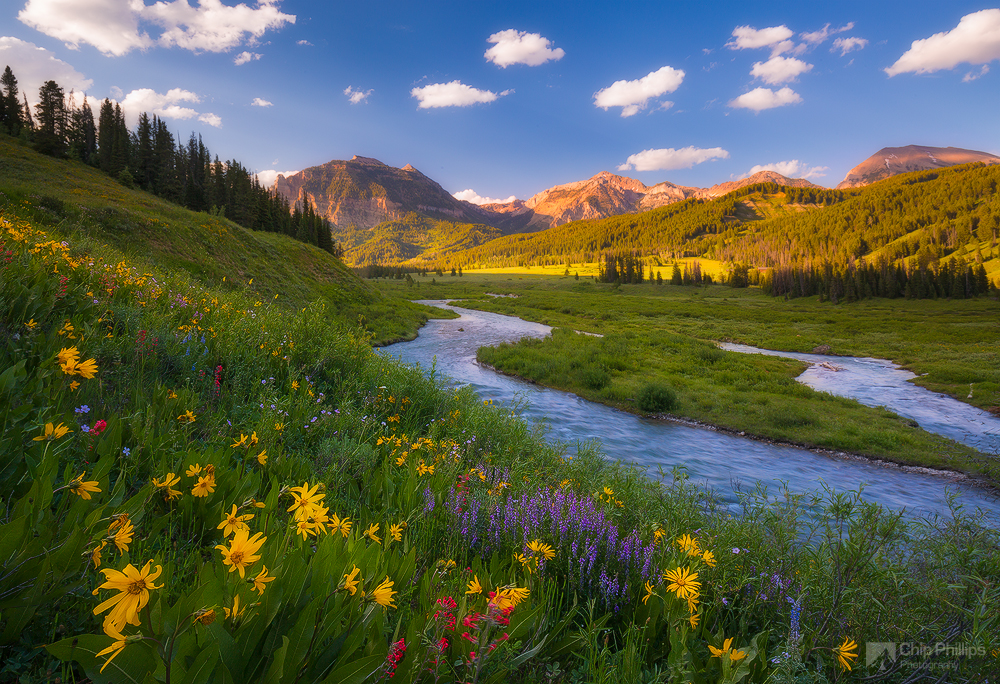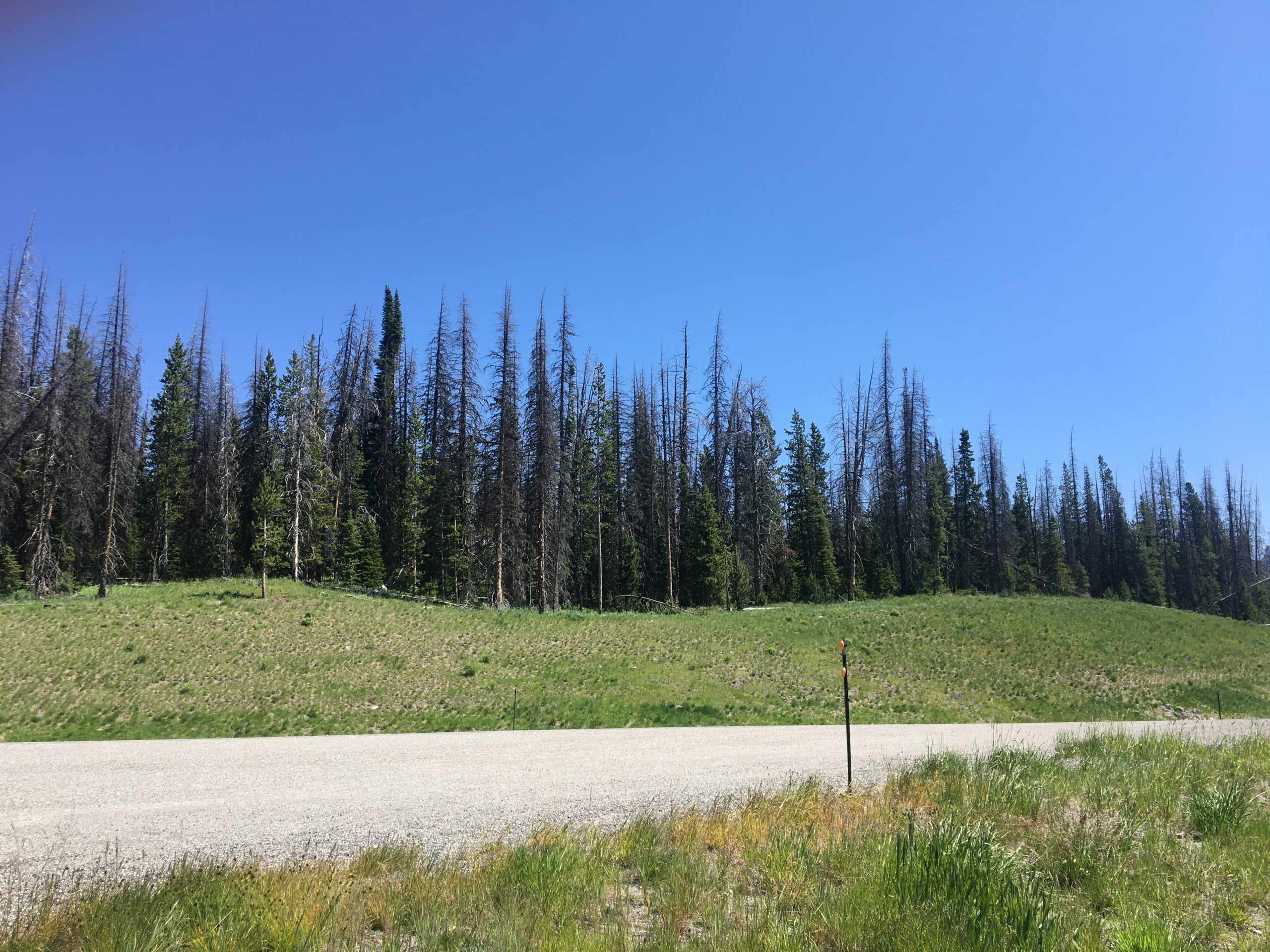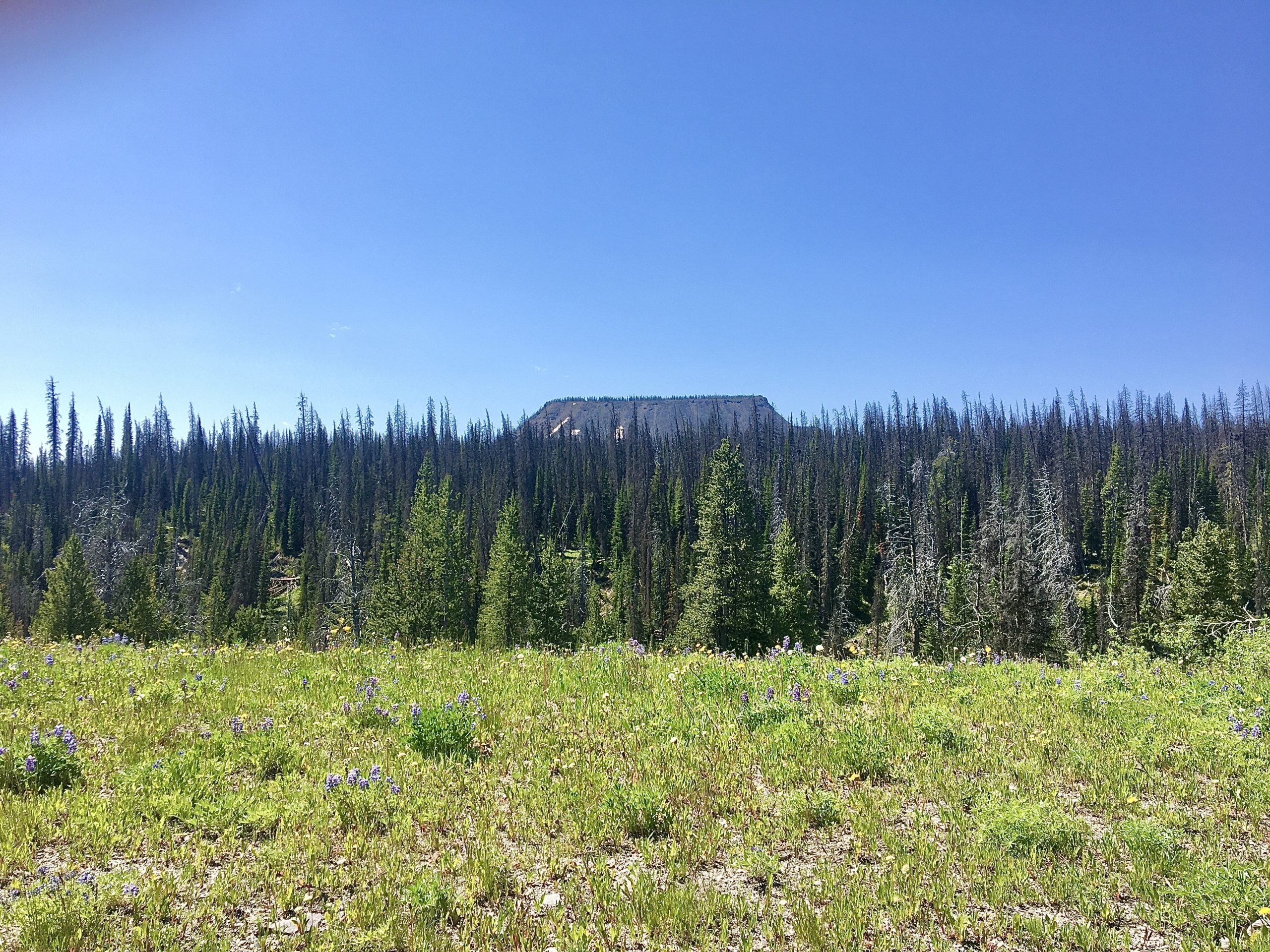
I spend a lot of time photographing, camping, and hiking in the beautiful state of Wyoming. While the scenery never fails to inspire me, it’s impossible not to notice the broad swaths of brown, dead and dying pine trees through the state’s plentiful forests. I’d heard of pine beetles before, and the devastation they’ve caused, but what exactly are they? And what has caused them to get so bad? It’s time to take a deep dive into learning about bugs!
What is a pine beetle?
Pine beetles are tiny bugs, smaller than your fingernail, that are native to the intermountain west. While their presence is natural and expected, a perfect storm of conditions have turned them into a destructive epidemic. Pine beetles burrow into the bark of mainly lodgepole pines, releasing a chemical signal that invites their beetle friends to join them. Healthy trees can sometimes fight off this attack, but most trees will eventually die. The beetles tunnel under the bark, feed, and lay eggs, and the larvae from those eggs hatches and spends the winter under the bark. In the summer they emerge, fully grown, and the cycle continues. In 2011, the United States Forest Service estimated that the mountain pine beetle had destroyed 3.3 million acres of lodgepole, ponderosa, limber, whitebark, and bristlecone pine trees in Wyoming alone.
So why is it so bad now?
While pine beetles are native to Wyoming, and outbreaks are a natural part of the life cycle of a forest, several conditions have coincided to create the perfect situation for pine beetles to thrive, and to kill trees on an epic scale. Extended droughts, old, dense forests, and warmer winters have contributed to an exploding population of the bugs in the mountain west. Cold winters used to keep the pine beetle population at bay: continuous weeks of temperatures below zero are necessary to keep their population at sustainable levels. And droughts that began in Wyoming in the 1990s have contributed by weakening the trees, making them more vulnerable to the beetles’ attacks. In the past several decades, the beetles have started to move to higher elevations, as well, and have been killing high-elevation whitebark pines: climate change and drought have made it possible for the bugs to survive at higher elevations.

As one can imagine, having thousands upon thousands of acres of dry, dead, standing trees is a huge risk factor for wildfires. Hot, dry conditions in the summer months combine with these miles and miles of dead trees to create a perfect tinderbox. In California this year, the U.S. Forest Service estimated that 80 to 90 percent of the over 300,000 acres that burned in the Creek Fire was that were already dead, killed by pine beetles. And of course the decimation of forests, either by beetle or by fire, affects an entire ecosystem of watersheds and wildlife that depend on the forest for food and shelter, and root systems that supply nutrients and prevent soil erosion.

What does the future hold?
In an interview with Kelsey Dayton on the website Wyofile, Wyoming State Forester Bill Crapser says “We have to decide, ‘what do we want our forests to look like 100 years from now, and how do we get there?’ It will be a long time…until you see solid lodgepole pine forests like we had.” While the landscape may be changed for decades, if not centuries, to come, healthy forest management can help mitigate the damage and the wildfire risk. Thinning, by prescribed burns and salvage logging, can help individual trees become stronger and healthier, and more able to fight off the beetles’ attack. Many western forests are the same age, due to logging when the west was settled by European immigrants. Diversifying the ages of the trees through patch thinning can help them be less susceptible to beetle outbreaks. To a large extent, the damage is already done. Recent aerial surveys show that beetle infestation is slowing, due to the fact that there just aren’t that many living lodgepole forests left. As climate change continues to contribute to our changing landscape, our nation’s forests will likely look quite different. But we can maintain what we have, and manage what’s left, through conservation, healthy forest management, and encouraging our elected leaders to help fight climate change.

Location: Spokane, Washington
Website: www.chipphillipsphotography.com
Instagram: www.instagram.com/chipphillipsphoto
Facebook: www.facebook.com/chipphillipsphoto
Chip Phillips began his relationship with photography in 2006 when his father gave him his old Pentax Spotmatic film SLR camera. Chip was immediately hooked and soon made the transition to digital. Given his lifelong love of the outdoors, he naturally made the progression to focusing on landscape photography. A professionally trained classical musician, Chip also performs as Principal Clarinet with the Spokane Symphony Orchestra, and is Adjunct Professor of Clarinet at Gonzaga University. Chip resides in Spokane Washington with his wife and son.

Recent Comments